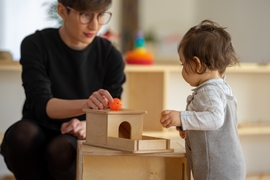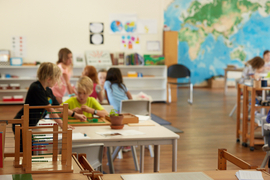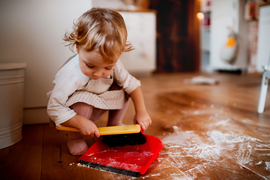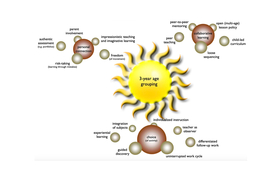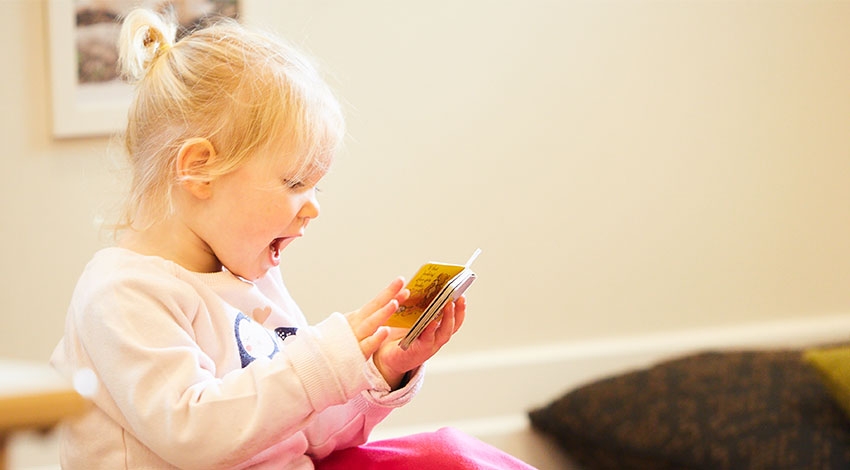
In a Montessori environment writing is introduced before reading; the reverse of most other methods of education. When writing, the words come from the child (the child knows what they are wanting to express) however reading is a more complex process. Now the child needs to decode (work out) someone else’s thoughts and ideas.
How can the language programme be supported at home?
Rich and varied spoken experiences need to be provided and modelled
Children should be talked with and not at (language is about communication) so aim to listen to and provide space and permission for children to express themselves.
Provide access to a variety of real experiences and the opportunity to live these experiences (for example don’t just talk about zoo animals, visit the zoo).
Expand your child’s vocabulary by using different words, for example summer weather doesn’t need to be described as being just hot, but also humid or sticky. “It’s a dry, still day today”; “look at the clear blue sky, there isn’t even a single cloud in sight”
Read with and to your child
Raise your child’s awareness of words and letters in their environment and provide a selection of good quality books, poetry, music and songs. Also model reading for enjoyment. If you want your child to become someone who enjoys books they need to also see you enjoy books. When was the last time you sat down with a book? Has your child seen you laugh out loud when reading; seen you truly engrossed in a book; seen you look for information in a book?
Does your child see and understand that we can get information, enjoyment, pleasure and experience different emotions from reading?
Try to avoid giving the child the names of the letters initially
It can be tempting to give your child the names of the letters, however children need to be familiar with the sounds rather than the names of letters in order to ‘write’ with the moveable alphabet and later sound out words as they move toward reading.
Play sound games with the child so they are accustomed to listening to different sounds in different positions
This will support their work with the moveable alphabet. For example “I’m thinking of / I can see something beginning with (sound of the first letter of the word)”. As the child gains more experience, change it to something ending with …, then something with … in the middle and for more challenge ask the child to say all the sounds they can hear in a word.
Expose your child to lower case (preferably cursive) letters
It can be tempting to show your child how to write their name in capital letters thinking it is easier to write these.
Your child needs to become familiar with lower case letters and practice the flowing shapes of cursive which do come more naturally to the hand of the child compared to the straight lines and ‘stop-start nature’ of capitals. Think of your young child who typically makes his or her first ‘marks’ with a scribble. A rounded, curved shape versus lines.
A chalkboard, magna doodle or similar is very handy for practicing writing letters and numbers and particularly handy for repeating and ‘getting rid of the evidence’ as your child perfects their writing skills and hand control. These early attempts can be wiped off or erased compared to using paper and a pencil or pen.
The mastery of writing and reading is a rite of passage and is a wonderful time of celebration. Celebrate this and encourage your child in his or her efforts. Writing and reading gives your child a whole new way of communicating. How wonderful to be able to communicate through gestures, with sounds and now also silently through the use of the printed word!
To get you started here are some suggestions of books many children, and their families, have loved sharing over the years. Throw the door to the world of books wide open for your child, family and yourself.
